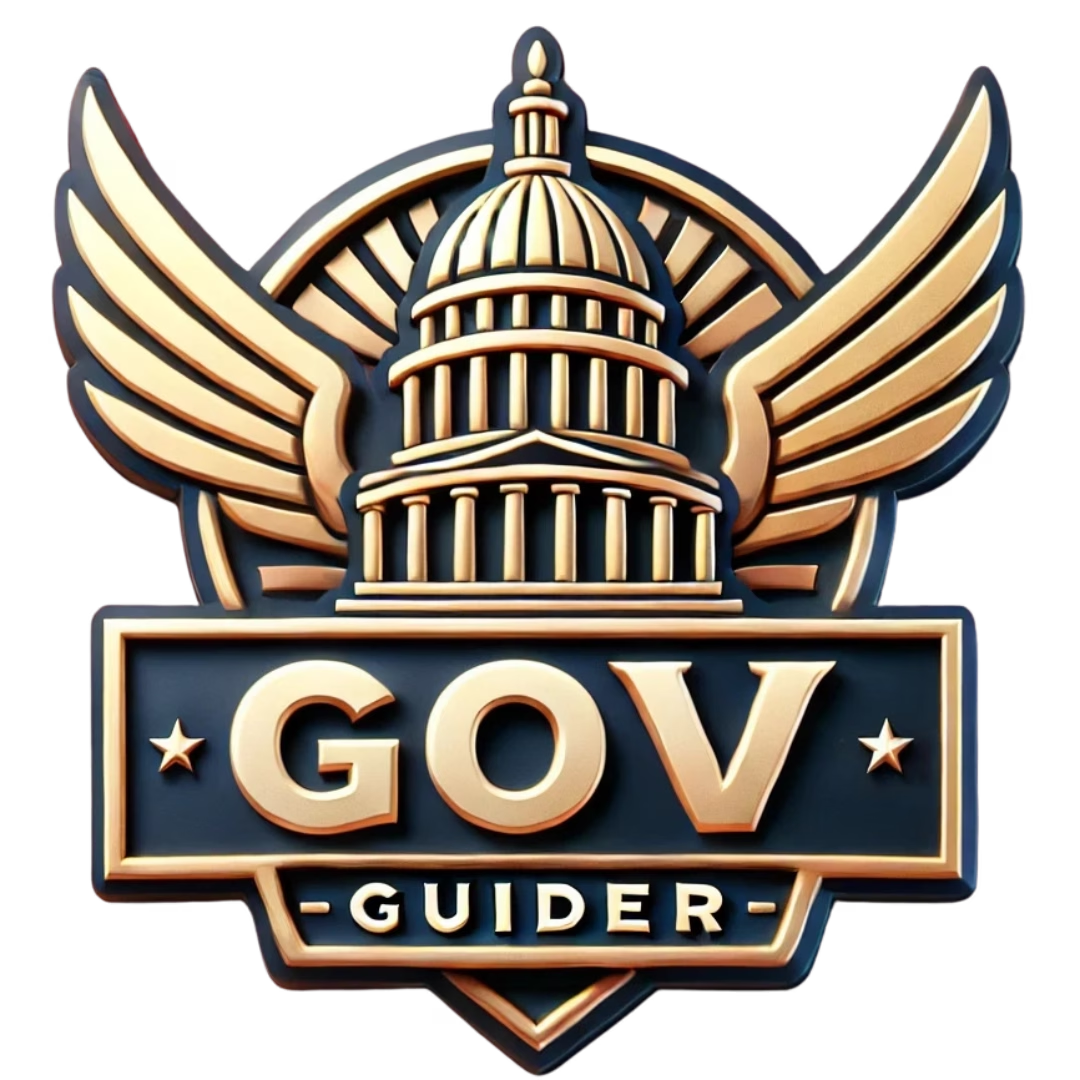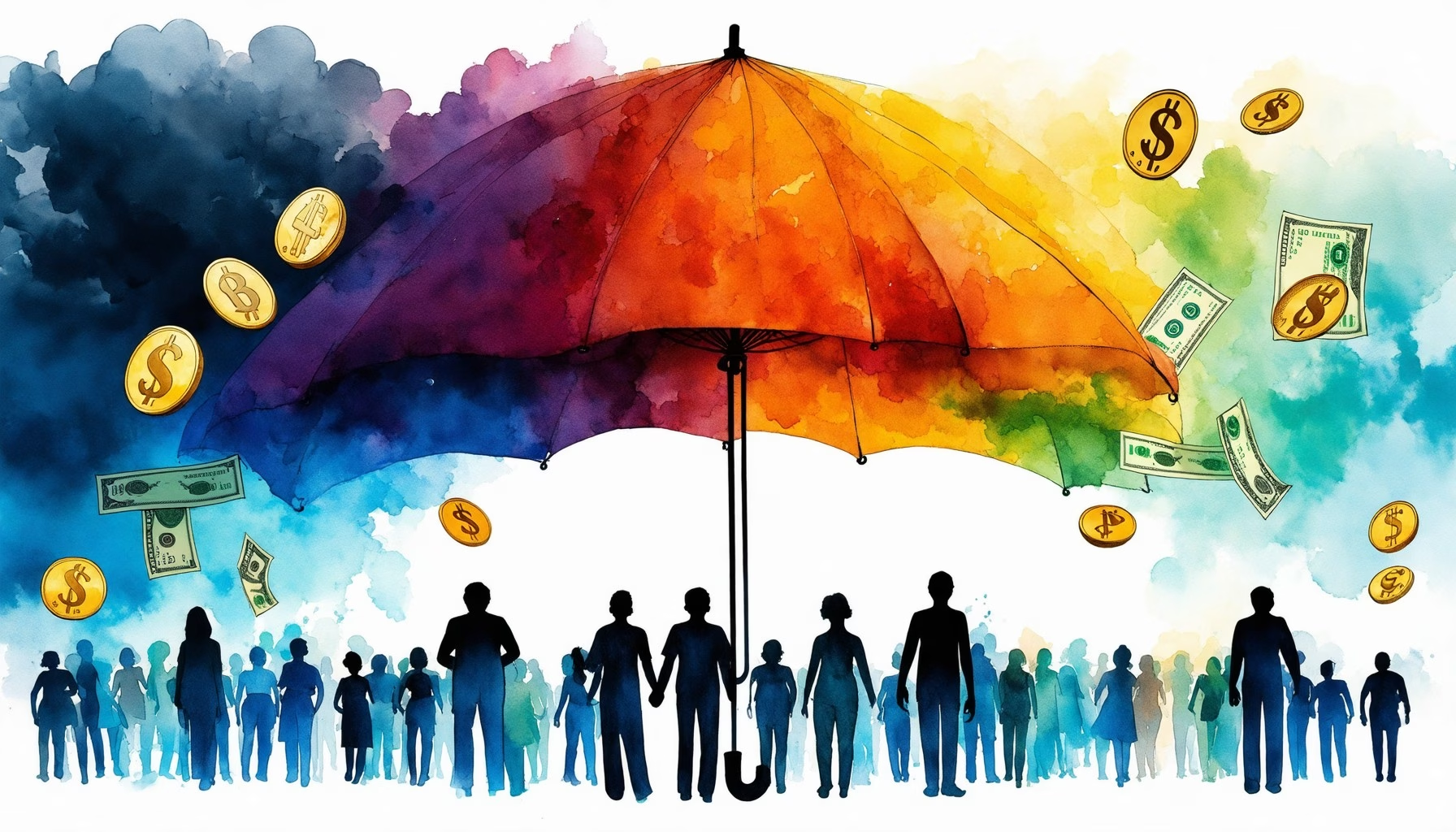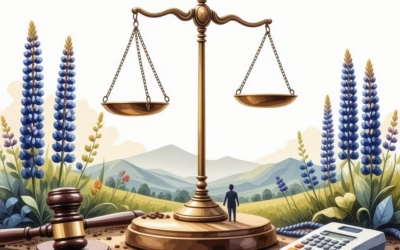Key Takeaways
- COVID assistance payments remain available in 2024 for eligible individuals and businesses impacted by the pandemic.
- The $1,400 Economic Impact Payment (EIP) is still accessible for qualifying taxpayers, with specific income thresholds.
- State-specific relief programs and federal assistance initiatives may provide additional support for those facing financial hardships.
- Individuals can claim missed COVID relief payments through their tax returns by filing for the Recovery Rebate Credit.
- Understanding the eligibility criteria for COVID relief payments is essential for maximizing available benefits.
- The $7,000 government grant assists low-income undergraduate students with educational expenses and is part of broader COVID relief efforts.
- Stay updated on application deadlines and potential new relief measures by checking reliable resources like the IRS and Gov Guider.
As we navigate the evolving landscape of financial support in the wake of the pandemic, understanding the COVID assistance payment options available in 2024 is crucial for individuals and businesses alike. This article will delve into the current status of COVID relief payments, exploring whether you can still receive a COVID relief payment and what amounts are being offered this year. We will provide a comprehensive breakdown of the COVID relief payment 2024 amounts, compare them to previous years, and clarify the definition and purpose of COVID relief money. Additionally, we will outline eligibility criteria for various payments, including the much-discussed $1,400 economic impact payment and the $7,000 government grant for individuals. By the end of this article, you will have a clear understanding of who qualifies for these payments, how to apply for the COVID assistance payment, and the important deadlines to keep in mind. Join us as we uncover the essential insights and guidance you need to navigate the world of COVID relief payments effectively.
Can you still get a COVID relief payment?
Understanding the Current Status of COVID Relief Payments
Yes, you can still receive COVID relief payments, but eligibility and availability depend on specific circumstances. The Economic Impact Payments (EIPs), also known as stimulus checks, were distributed in three rounds by the IRS:
- First Round: Issued in April 2020, providing up to $1,200 per eligible adult and $500 per qualifying child.
- Second Round: Distributed in December 2020, offering up to $600 per eligible adult and $600 per qualifying child.
- Third Round: Released in March 2021, providing up to $1,400 per eligible adult and $1,400 per qualifying child.
As of now, the IRS has completed the distribution of these payments, and the Get My Payment tool is no longer operational for checking payment status. However, if you believe you are eligible for any missed payments, you can claim them through your tax return by filing for the Recovery Rebate Credit.
For the most accurate and updated information regarding COVID relief payments, including potential future assistance programs, visit the IRS website or consult official resources such as Gov Guider, which can provide guidance on government benefits and eligibility requirements. Always ensure to check the latest updates from reliable sources to stay informed about any new relief measures that may be introduced.
Overview of COVID Assistance Payment Options Available in 2024
In 2024, various COVID assistance payment options may still be available, particularly for those who have faced financial hardships due to the pandemic. These options can include:
- State-Specific Relief Programs: Many states have implemented their own COVID support payment initiatives to assist residents. These programs may vary significantly in terms of eligibility and payment amounts.
- Federal Assistance Programs: The federal government may introduce new relief measures or extend existing programs to support individuals and businesses affected by COVID-19. Keeping an eye on announcements from the Small Business Administration and other federal agencies is crucial.
- Tax Credits and Deductions: Individuals may also benefit from tax credits related to COVID relief, which can provide financial support when filing taxes.
For detailed information on available programs, including eligibility criteria and application processes, refer to resources like Gov Guider.
How much is the COVID relief payment?
The COVID relief payment, officially known as Economic Impact Payments (EIPs), was part of the COVID-related Tax Relief Act of 2020, which was enacted in December 2020. This legislation authorized payments of up to $600 for eligible individuals and an additional $600 for each qualifying child under the age of 17.
To qualify for the full payment, individuals must have an adjusted gross income (AGI) below $75,000 for single filers or $150,000 for married couples filing jointly. Payments begin to phase out for individuals with an AGI above these thresholds, reducing by $5 for every $100 earned over the limit. For the most current information regarding COVID relief payments, including potential updates or changes, individuals can refer to the U.S. Department of the Treasury’s official website or consult resources like Gov Guider, which provides guidance on government benefits and relief programs.
Breakdown of COVID Relief Payment Amounts for 2024
In 2024, the COVID relief payment amounts may vary based on new legislation and economic conditions. As of now, the anticipated COVID relief payments for 2024 are expected to follow a similar structure to previous years, with potential adjustments based on inflation and economic recovery efforts. It is essential to stay informed about any announcements regarding COVID support payment 2024, as these payments could provide crucial financial assistance to individuals and families still affected by the pandemic.
For detailed information on the latest COVID relief payment eligibility and amounts, you can visit the IRS COVID-19 resources or check the Federal assistance for COVID-19 page on Gov Guider.
Historical Comparison: COVID Relief Payments from 2020 to 2023
From 2020 to 2023, COVID relief payments have evolved significantly. Initially, the payments in 2020 were set at $1,200 for eligible individuals and $500 for qualifying children under the CARES Act. In 2021, the American Rescue Plan increased these amounts to $1,400 per individual and $1,400 per child, expanding eligibility criteria to include more families. By 2023, the total COVID relief payments had reached substantial figures, providing essential support to millions of Americans during the ongoing economic challenges.
Understanding the historical context of these payments helps individuals grasp the significance of ongoing COVID relief payments and the potential for future assistance. For a comprehensive overview of the total COVID relief payments distributed, you can explore resources on government relief programs.
What is COVID relief money?
COVID relief money refers to financial assistance provided by the U.S. government to help individuals, businesses, and local governments cope with the economic impact of the COVID-19 pandemic. The primary source of this funding is the Coronavirus Aid, Relief, and Economic Security (CARES) Act, enacted in March 2020.
Key components of COVID relief money include:
- Direct Payments to Individuals: The CARES Act authorized Economic Impact Payments (EIPs) to eligible individuals and families, providing immediate financial relief. For example, individuals received up to $1,200, while couples received up to $2,400, with additional payments for dependents.
- Unemployment Benefits: Enhanced unemployment benefits were provided, including an additional $600 per week for those who qualified, significantly increasing financial support for unemployed workers during the pandemic.
- Paycheck Protection Program (PPP): This program offered forgivable loans to small businesses to help them retain employees and cover essential expenses, thereby preventing layoffs and business closures.
- State and Local Government Support: The Coronavirus Relief Fund allocated $150 billion to state, local, and tribal governments to address the urgent needs arising from the pandemic, such as public health expenditures and economic stabilization efforts.
- Healthcare Funding: Additional funding was directed towards healthcare providers to support the response to COVID-19, including testing, treatment, and vaccine distribution.
For more detailed information on COVID relief funds and their impact, you can refer to the IRS COVID-19 resources and the CDC COVID-19 information.
Types of COVID Relief Payments Available for Individuals and Businesses
There are various types of COVID relief payments available to support both individuals and businesses during these challenging times. Understanding these options can help you access the assistance you may need.
For individuals, the primary forms of assistance include:
- Economic Impact Payments: These direct payments are designed to provide immediate financial relief to eligible individuals and families.
- Unemployment Insurance: Enhanced benefits have been made available to those who lost their jobs due to the pandemic, ensuring a safety net during economic downturns.
For businesses, key relief options include:
- Paycheck Protection Program (PPP): This initiative offers forgivable loans to small businesses to help maintain their workforce and cover operational costs.
- Economic Injury Disaster Loans (EIDL): These loans provide financial assistance to small businesses affected by the pandemic, helping them to recover and sustain operations.
To explore more about government assistance programs, visit COVID-19 relief payments for comprehensive guidance.
Who is eligible for the $1400 economic impact payment?
Eligibility for the $1400 economic impact payment, also known as the Economic Impact Payment (EIP), is primarily determined by your adjusted gross income (AGI) as reported on your tax return. Here are the key eligibility criteria:
- Income Thresholds: Individuals with an AGI of up to $75,000 are eligible for the full payment. Married couples filing jointly with an AGI of up to $150,000 will also receive the full payment. Payments are gradually reduced for individuals earning between $75,000 and $80,000 and for married couples earning between $150,000 and $160,000. Those with AGIs above these thresholds do not qualify for the payment.
- Dependent Considerations: Eligible taxpayers can receive an additional $1,400 for each qualifying dependent, including children and certain adult dependents.
- Filing Status: Single filers, heads of household, and married couples filing jointly are all considered under these income limits.
- Non-Filers: Individuals who do not typically file taxes may still be eligible for the payment if they meet the income requirements. They can register through the IRS Non-Filers tool.
- Citizenship and Residency: To qualify, you must be a U.S. citizen, U.S. national, or a resident alien for tax purposes.
For more detailed information, refer to the IRS guidelines on Economic Impact Payments, which provide comprehensive insights into eligibility and application processes.
COVID Assistance Payment Eligibility for Different Demographics
The eligibility for COVID assistance payments varies across different demographics, ensuring that support reaches those who need it most. Here’s a breakdown of how different groups qualify for these payments:
- Low-Income Individuals: Many low-income individuals qualify for COVID relief payments based on their AGI. Programs are designed to assist those who have faced financial hardships due to the pandemic.
- Families with Children: Families with children can benefit significantly from the COVID support payment, as additional funds are allocated for each dependent, enhancing financial stability during challenging times.
- Senior Citizens: Seniors may also qualify for COVID relief payments, especially if they are on fixed incomes. Programs aimed at assisting older adults are crucial for their financial well-being.
- Small Business Owners: Business owners can access COVID relief payments tailored to support their operations during the pandemic. This includes specific programs for sectors heavily impacted, such as entertainment and personal services.
Understanding the eligibility criteria for COVID assistance payments is essential for maximizing the benefits available. For more information on navigating these programs, visit Gov Guider’s resource on COVID-19 relief payments.
What is the $7,000 government grant for individuals?
The $7,000 government grant is primarily aimed at supporting low-income undergraduate students in the United States. This financial assistance is designed to alleviate the burden of tuition, fees, and other essential school-related expenses, thereby enhancing access to higher education for those in need. Understanding the eligibility criteria and application process is crucial for students looking to benefit from this grant.
Exploring the $7,000 Government Grant: Eligibility and Application Process
To qualify for the $7,000 government grant, applicants must meet specific eligibility criteria:
- Financial Need: Applicants must demonstrate financial need, typically assessed through the Free Application for Federal Student Aid (FAFSA).
- Enrollment Status: Students must be enrolled or accepted for enrollment in an eligible degree or certificate program at a recognized institution.
- Citizenship: Applicants must be U.S. citizens or eligible non-citizens.
The application process involves several key steps:
- Complete the FAFSA: This is the first step in applying for federal financial aid, including the $7,000 grant.
- Review Award Letters: After submitting the FAFSA, students will receive financial aid award letters from their schools, detailing the types and amounts of aid they qualify for.
- Accept the Grant: Students must formally accept the grant through their school’s financial aid office.
For further assistance, students may also consider consulting resources like Gov Guider, which can provide additional guidance on navigating government grants and financial aid options.
How the $7,000 Grant Fits into the Broader COVID Relief Payment Framework
The $7,000 government grant is part of a broader initiative to provide financial support during the ongoing economic challenges posed by the COVID-19 pandemic. This grant complements other COVID relief payments aimed at individuals and families, ensuring that those most affected can access necessary resources.
In addition to the grant, various emergency funds and cash assistance programs are available to help low-income individuals navigate these challenging times. Understanding these options can empower individuals to make informed decisions about their financial futures.
Who received COVID relief funds?
COVID relief funds were distributed to various entities to mitigate the economic fallout from the pandemic. The primary recipients included:
- State Governments: Each state received direct payments to support their budgetary needs and public services.
- Local Governments: Cities and counties were allocated funds to address local economic challenges and support community services.
- Territorial Governments: U.S. territories also received financial assistance to help stabilize their economies.
- Tribal Governments: Indigenous tribes were granted funds to support their unique economic and health-related challenges during the pandemic.
The funding was part of the Coronavirus Aid, Relief, and Economic Security (CARES) Act and subsequent legislation, which aimed to provide immediate financial relief. According to the U.S. Department of the Treasury, over $150 billion was allocated through the Coronavirus Relief Fund, with payments made in two rounds to ensure timely support for recovery efforts. For more detailed data on the distribution of these funds, you can visit Pandemic.oversight.gov, which provides comprehensive insights into the allocation and usage of COVID relief funds across different government levels.
COVID Relief Payments for Businesses: Who Qualified and How Much?
COVID relief payments for businesses were designed to support various sectors impacted by the pandemic. Key eligibility criteria included:
- Small Businesses: Many small businesses qualified for COVID support payments, including those in retail, hospitality, and service industries.
- Nonprofits: Nonprofit organizations also received assistance to maintain operations and support their missions during the crisis.
- Entertainment Production Crews: Specific relief payments were allocated to support entertainment production crews affected by shutdowns.
Businesses could apply for these funds through programs such as the Paycheck Protection Program (PPP) and Economic Injury Disaster Loans (EIDL). The amount of relief varied based on factors like the number of employees and revenue losses. For more information on how to apply for COVID assistance payment, visit Gov Guider’s resource page.
How to apply for covid assistance payment?
Applying for a covid assistance payment can be a straightforward process if you follow the right steps. Here’s a detailed guide to help you navigate the application process effectively.
Step-by-Step Guide on How to Apply for COVID Assistance Payment
- Determine Your Eligibility: Before applying, check if you meet the covid relief payment eligibility criteria. This includes income limits, residency requirements, and other factors that may affect your application.
- Gather Necessary Documentation: Collect all required documents such as proof of income, identification, and any relevant tax information. This will streamline your application process.
- Visit the Official Application Portal: Go to the official government website or the designated application portal for covid assistance payments. Ensure you are on a secure site to protect your personal information.
- Complete the Application Form: Fill out the application form accurately. Double-check all entries to avoid delays. If you have questions, refer to the IRS COVID-19 resources for guidance.
- Submit Your Application: After completing the form, submit your application as instructed. Keep a copy of your submission for your records.
- Track Your Application Status: Use the application tracking feature, if available, to monitor the status of your application. This can help you stay informed about any additional steps you may need to take.
Important Dates and Deadlines for COVID Relief Payment Applications
Staying informed about covid relief payment dates is crucial for timely applications. Here are some key dates to keep in mind:
- Application Start Date: Applications for the covid support payment 2024 typically open in early 2024. Check the official site for specific dates.
- Application Deadline: Most applications must be submitted by a specified deadline, often within a few months of the start date. Ensure you apply early to avoid missing out.
- Payment Distribution Dates: Once approved, payments are usually distributed within a few weeks. Keep an eye on announcements regarding covid relief payments 2025 for updates on future distributions.




